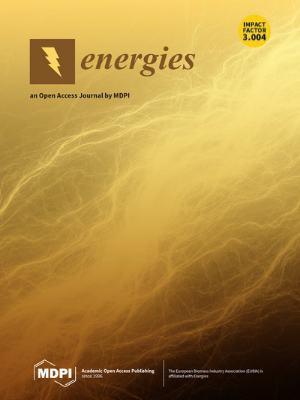质子交换膜燃料电池 (PEMFC) 阴极双层金属丝网集成的数值模拟
IF 3.2
4区 工程技术
Q3 ENERGY & FUELS
引用次数: 0
摘要
优化燃料电池中反应物和产物的传质是实现最佳燃料电池性能的关键因素。本研究以固定应用为重点,采用计算流体动力学(CFD)和创新设计的双层金属丝网(DLWM)作为流场和气体扩散层,对燃料电池的传质特性进行了全面研究。这项研究将精心开发的三维精细网格流场与质子交换膜燃料电池(PEMFC)阴极端的集成 DLWM 数值模型进行了对比。评估显示,与 DLWM 流场相比,三维精细网格流场的压降明显增加了三倍,这表明 DLWM 配置提高了效率。氧气分布分析进一步强调了三维细网和拟议的 DLWM 的良好性能,而 DLWM 则进一步提高了电池内的除水能力。令人印象深刻的是,DLWM 在 0.55 V 的电压下达到了 2137.17 mA/cm2 的显著最大电流密度,表明其性能优于三维细网,同时也证明了其在大规模生产中的成本效益和可扩展性潜力。本文章由计算机程序翻译,如有差异,请以英文原文为准。
Numerical Simulation of Double Layered Wire Mesh Integration on the Cathode for a Proton Exchange Membrane Fuel Cell (PEMFC)
The optimization of reactant and product mass transfer within fuel cells stands as a critical determinant for achieving optimal fuel-cell performance. With a specific focus on stationary applications, this study delves into the comprehensive examination of fuel-cell mass transfer properties, employing a sophisticated blend of computational fluid dynamics (CFD) and the innovative design of a double-layered wire mesh (DLWM) as a flow field and gas diffusion layer. The investigation notably contrasts a meticulously developed 3D fine mesh flow field with a numerical model of the integrated DLWM implemented on the cathode end of a proton exchange membrane fuel cell (PEMFC). Evaluations reveal that the 3D fine mesh experiences a notable threefold increase in pressure drop compared to the DLWM flow field, indicative of the enhanced efficiency achieved by the DLWM configuration. Oxygen distribution analyses further underscore the promising performance of both the 3D fine mesh and the proposed DLWM, with the DLWM showcasing additional improvements in water removal capabilities within the cell. Impressively, the DLWM attains a remarkable maximum current density of 2137.17 mA/cm2 at 0.55 V, indicative of its superior performance over the 3D fine mesh, while also demonstrating the potential for cost-effectiveness and scalability in mass production.
求助全文
通过发布文献求助,成功后即可免费获取论文全文。
去求助
来源期刊

Energies
ENERGY & FUELS-
CiteScore
6.20
自引率
21.90%
发文量
8045
审稿时长
1.9 months
期刊介绍:
Energies (ISSN 1996-1073) is an open access journal of related scientific research, technology development and policy and management studies. It publishes reviews, regular research papers, and communications. Our aim is to encourage scientists to publish their experimental and theoretical results in as much detail as possible. There is no restriction on the length of the papers. The full experimental details must be provided so that the results can be reproduced.
 求助内容:
求助内容: 应助结果提醒方式:
应助结果提醒方式:


